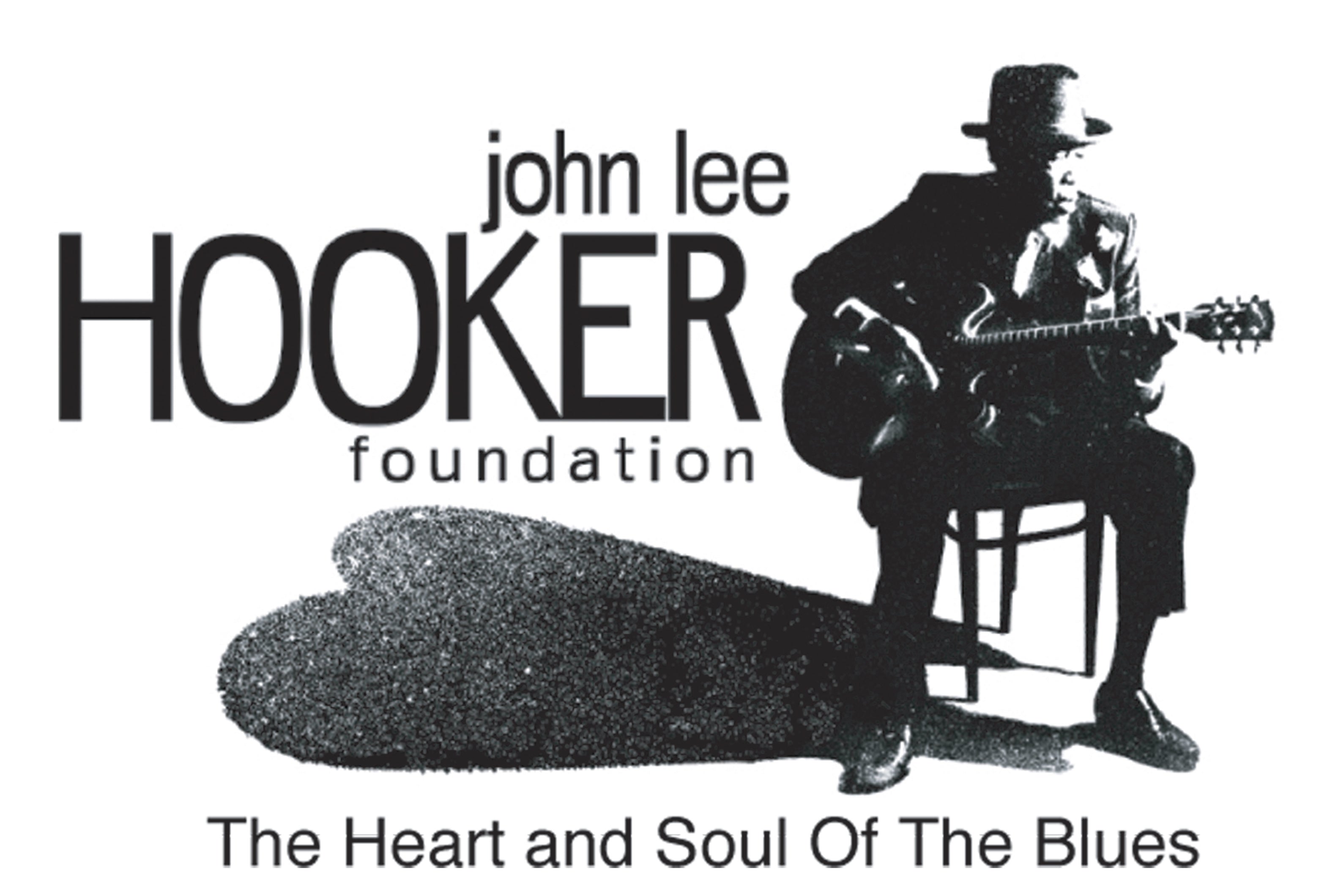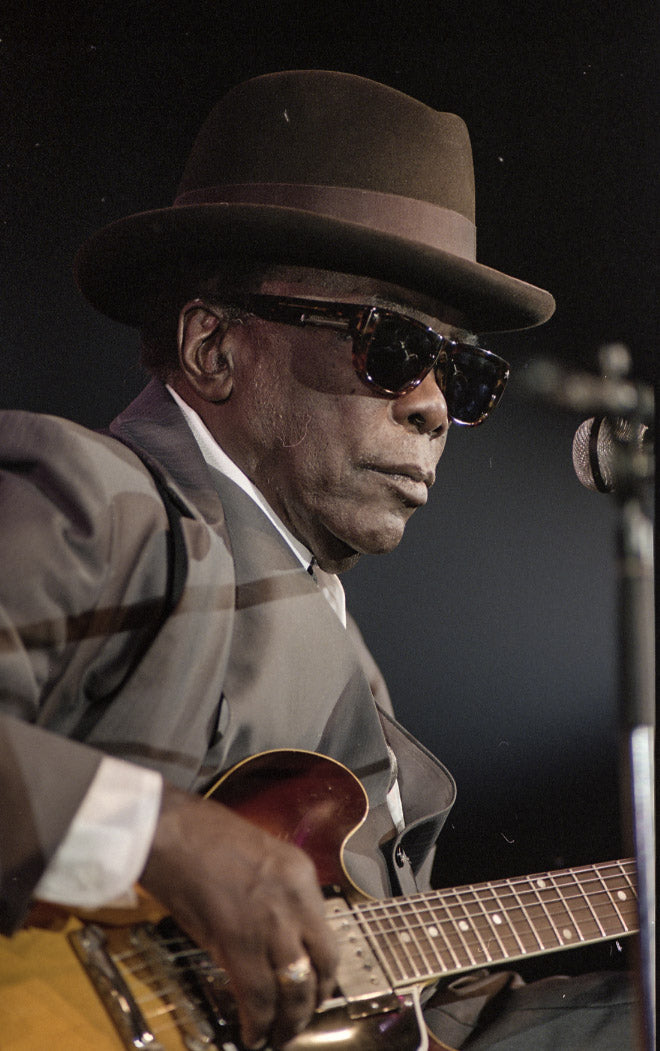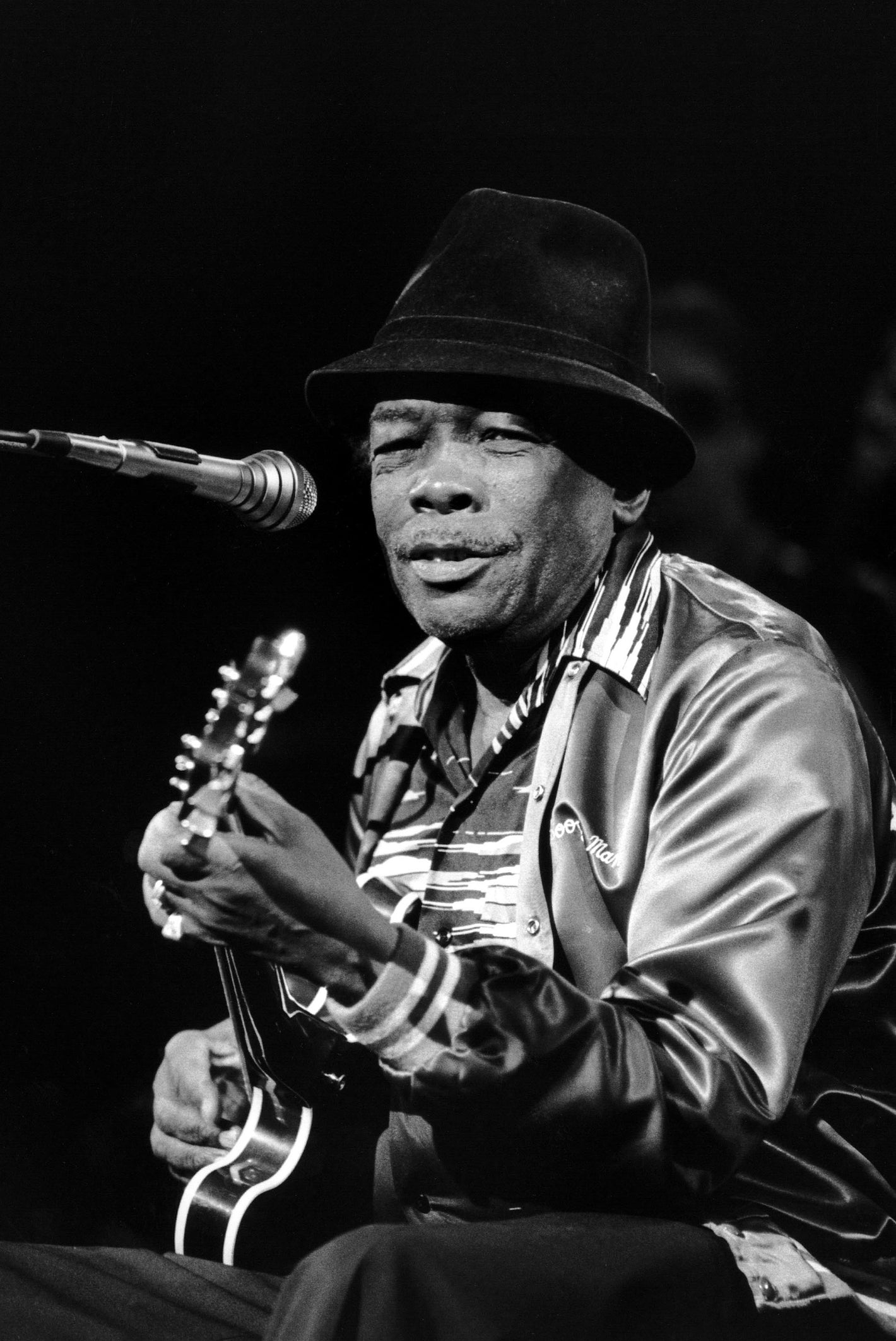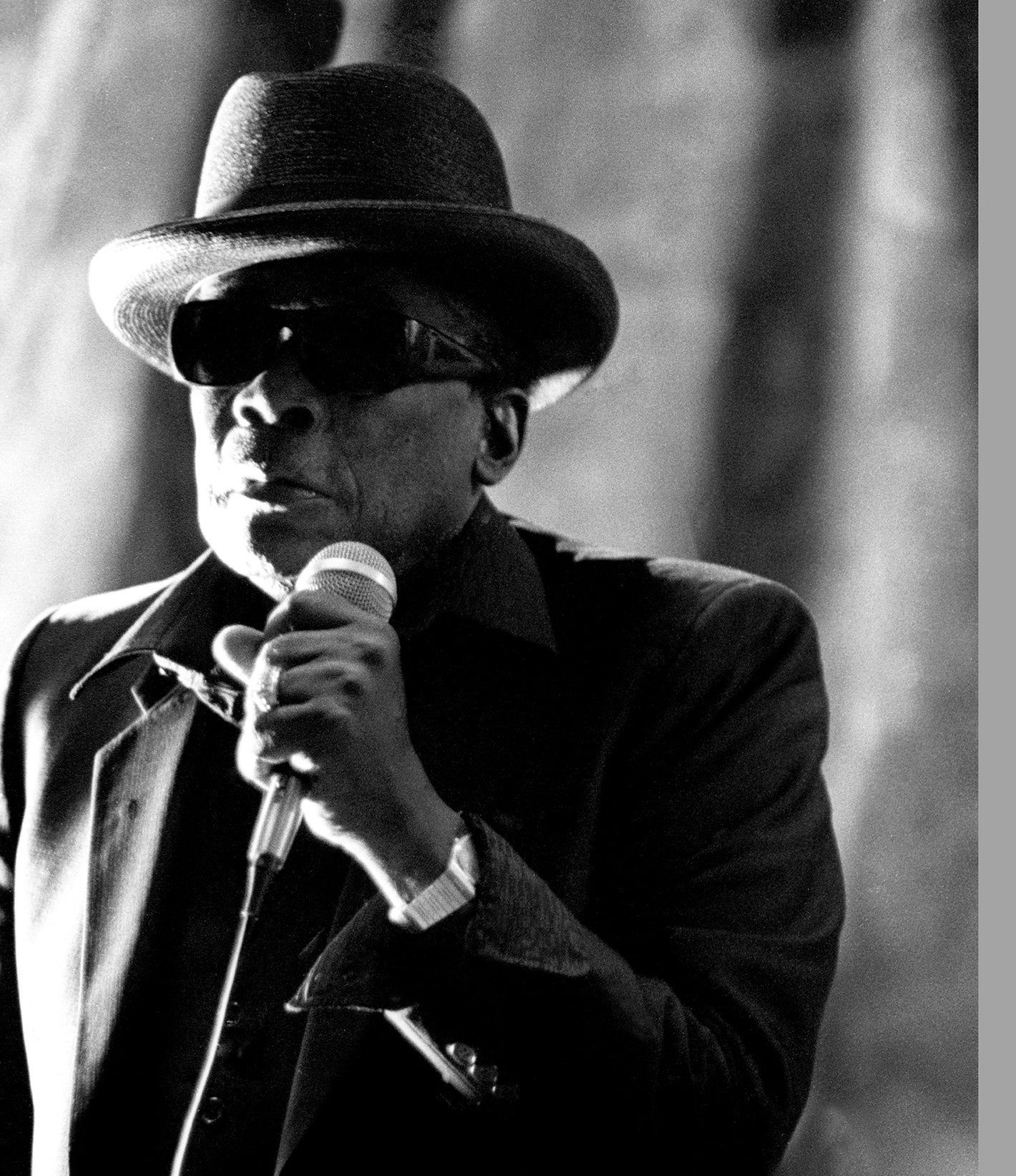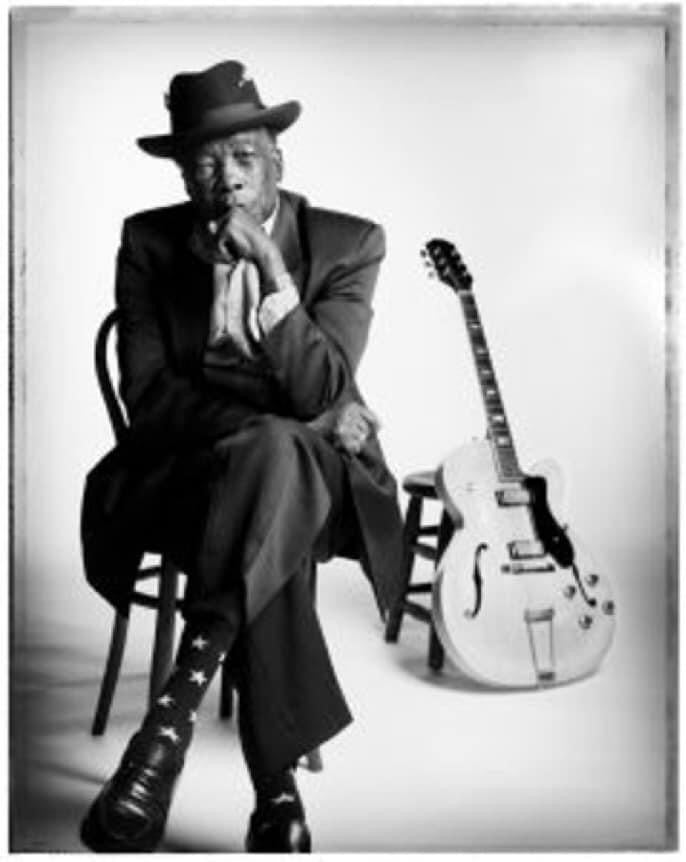History
THE MAN HIMSELF

John Lee Hooker's music was at once elemental and complex. He could hold your attention fast with a boogie rhythm repeated over a single chord. His guitar work was hypnotic to hear and mesmerizing to see. Watching his fingers work, one could see his thumb pound out the bass notes while his rubbery index finger tickled out the higher notes. He played Africa with his guitar and sang America with his voice.
John Lee Hooker was born in the Mississippi Delta in 1917 or 1920, depending on whom you hear it from. He was too young to really know blues music pioneers like Charley Patton or Robert Johnson, but his stepfather did. His stepfather, Will Moore, was a blues singer/guitarist playing the same fish fries and juke joints that Johnson, Son House and others played.
At age 14, John Lee headed north to escape the crush of the Great Depression and the omnipresence of the religious, who had decreed that blues music was the devil's music. He stopped off in Memphis where he worked at an African-American movie house as an usher. Then, he moved up to Cincinnati, Ohio, where he worked for a cesspool company while staying with relatives. All the while, he continued playing with blues musicians and singing from time to time with gospel groups.

In 1940, the war in Europe was beginning to alleviate the harsh conditions of the American economy. In particular, Detroit, Michigan, began to boom as the United States entered the war, producing tanks and other military vehicles on the automobile lines. With such prosperity, the black community was able to work the factories, earn money, and spend it in bars and house-rent parties. John Lee Hooker was able to play the blues music that he had learned from his stepfather and build a substantial following among the workers who originated in the rural South.
It wasn't long before small, independent recording companies snapped up Mr. Hooker. His first release, "Boogie Chillen'", was recorded for a company called Modern and released in 1948. By 1949, "Boogie Chillen'" appeared on jukeboxes all over the country and blues players from all over were covering the song. The single chord rhythm was simple, but brilliant and it echoed an antique musical impetus that reverberated from Reconstruction days. That impetus was called boogie-woogie, which was a dance popular in the late nineteenth century among sharecropper's families. "Boogie Chillen'" went on to number one on Billboard's R&B chart in 1949, and secured John Lee's future as a professional blues musician.
He enjoyed a good deal of success with songs like "Crawlin' King Snake" and "I'm in the Mood" climbing high on Billboard's charts. From the late 1940s until the mid-1950s, solo blues singer/guitarists had a steady audience, but once the popularity waned, John Lee Hooker began playing with full bands and eased into the world of modern blues musicians, like Elmore James and T-Bone Walker.
He hooked up with Chicago's Vee-Jay records, for which he eventually recorded his most recognized song, 1962's "Boom Boom". The Animals recorded their own version of the song, and introduced John Lee Hooker to England, where young musicians seemed to be starving for older, American blues musicians to emulate. Mr. Hooker, along with Howlin' Wolf, Muddy Waters, T-Bone Walker, Elmore James, BB King, Little Richard and Chuck Berry, became a major influence on English rockers like

At the same time in the early 1960s, a blues revival occurred in the U.S., which reintroduced Son House, Lightning Hopkins, Sonny Terry and Brownie McGee, Muddy Waters, Mississippi John Hurt, and John Lee Hooker. These blues men, and others like them, moved from bluesy whiskey joints in black neighborhoods to coffee shops and folk festivals among white urban and rural settings. They all enjoyed a wave of popularity that continued through the end of the 1960s. Eric Clapton, Jimmy Page, Keith Richards and Mick Jagger, and Van Morrison.
In 1970, John Lee Hooker recorded "Hooker and Heat", an album with the rock band, Canned Heat who was famous for their song "On the Road Again". That song emulated Mr. Hooker's first hit "Boogie Chillen'" with a single-chord, droning rhythm. As the 1970s wore on, Mr. Hooker's popularity (as well as his contemporaries') eroded. However, the late 1980s would afford John Lee yet another revival.
The 1980s provided another blues revival in which the styles and influences of the older generation were infused with rock overtones. Blues Musicians like Taj Mahal and Buddy Guy, who first broke out during the 1960s revival, now enjoyed the '80s revival. But by this time, John Lee Hooker was one of only a handful of the blues men, whose careers were rejuvenated in the '60s, who was still alive to enjoy another revival. In 1989, John Lee hooked up with several of the musicians he had influenced, like Carlos Santana and Bonnie Raitt, to record the album "The Healer", for which he received a Grammy. Throughout the 1990s, Mr. Hooker has made appearances in other performers' concerts and albums. For instance, he made an appearance with Eric Clapton at the end of the Rolling Stone's "Steel Wheels" tour. He also played a duet with BB King on King's 1993 album "Blues Summit". In 1991, he was inducted into the Rock and Roll Hall of Fame.
Over the past seventy years, John Lee Hooker was immersed in the tradition, mysticism, inventiveness, and communication of blues music. He was one of the great ones who should be remembered as an architect of the blues, folk, country, rock, and even jazz music that has been strummed, shouted, and blared for the past fifty years. He was one of the great ones who should be thanked and praised for inspiring all of us to boogie-woogie.

